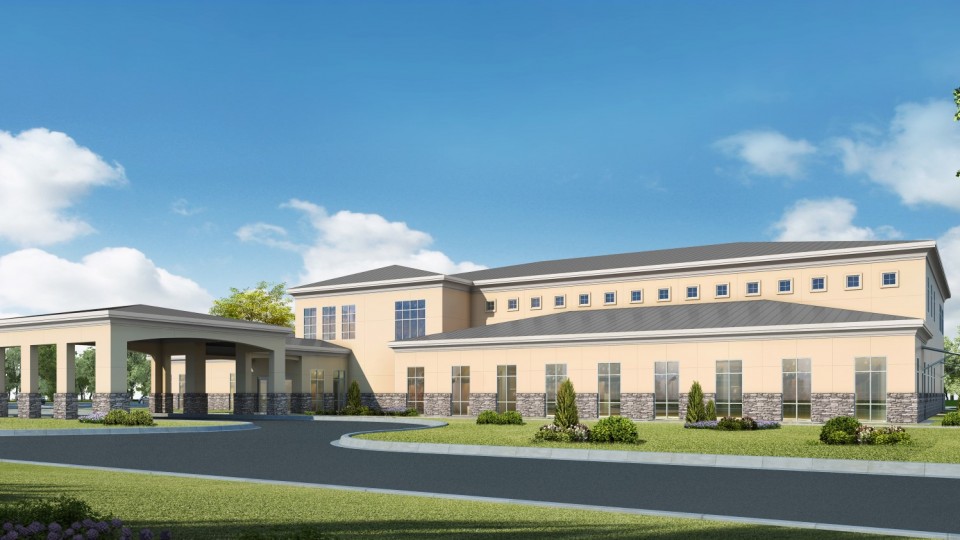Sacred Heart continues building expansion
- February 23, 2016
- / Shannon Nickinson
- / economy

Sacred Heart Health System is expanding its footprint with two new outpatient medical centers that will create 50 new permanent jobs.
The cost of both projects together is expected to total $13 million and should be finished by the end of 2017.
Construction is scheduled to begin in March for the Perdido Bay facility and in April for Tiger Point.
The Perdido Bay building will have six full-time physicians in the specialties of family medicine, obstetrics and gynecology, and pediatrics. The Tiger Point building will have six full-time family and internal medicine physicians.
Both outpatient centers will provide walk-in clinics for minor illnesses and injuries plus outreach services from different specialists (cardiology, orthopedics, OB/GYN, endocrinology, etc.) within Sacred Heart Medical Group on a routine basis.
Susan Davis, president and CEO of Sacred Heart Health System, said in a news release that the new facilities will improve access to care for patients in both communities.
Each of the new facilities will be 28,000 square feet in size and built on land already owned by Sacred Heart. Sacred Heart Medical Group currently has three family medicine physicians in Perdido Bay and three family and internal medicine physicians in Tiger Point, as well as rehabilitation facilities in both communities.
When the medical centers open in 2017, all physicians and healthcare services in Sacred Heart’s existing buildings will relocate to the new facilities.
It is the latest chapter in a building boom for Sacred Heart, which is owned by St. Louis, Mo.-based Ascension health system.
In 2015, CEO Susan Davis announced an ambitious plan to build a stand alone, five-story children’s hospital at the health system’s flagship Ninth Avenue location. Ascension will invest $55 million in the project.
Sacred Heart operates a 72-bed children’s hospital but it is contained in the north tower of the current campus. The goal is to create a regional center of excellence in children’s medicine from Mississippi to Jacksonville.
In 2015, Sacred Heart saw a $1 million expansion of its neonatal intensive care unit. In May of 2015, the health care company opened an urgent care clinic in Pace, as well.
Health care is a crucial part of the local economy. According to Economic Modeling Specialists International, physician’s offices, hospitals, and nursing and residential facilities employ 22,518 people in the Pensacola metro area.
That is 11.6 percent of all jobs in the metro area, according to Phyllis Pooley from the University of West Florida’s Office of Economic Development and Engagement.
Job growth and access to health care are two keys forces that influence metrics in the Studer Community Institute’s Pensacola Metro Dashboard. Developed in consultation with the University of West Florida, the dashboard is a group of metrics that measure the social, educational and economic well-being of a community.
 CivicCon launches with a look at good growth in cities
CivicCon launches with a look at good growth in cities
 Building stronger brains one baby, one parent at a time
Building stronger brains one baby, one parent at a time
 SCI debuts commercial on Early Learning City
SCI debuts commercial on Early Learning City
 Entrecon: World class speakers and an opportunity to sharpen skills
Entrecon: World class speakers and an opportunity to sharpen skills
 PYP Quality of Life survey 2017
PYP Quality of Life survey 2017
 EntreCon Pensacola 2016: A look back
EntreCon Pensacola 2016: A look back
 Leadership tip: getting better employee takeaways
Leadership tip: getting better employee takeaways
 Leadership tip: be interested instead of interesting
Leadership tip: be interested instead of interesting
 Leadership tip: delivering difficult messages
Leadership tip: delivering difficult messages
 Brain Bags boost Arc, Early Childhood Court programs
Brain Bags boost Arc, Early Childhood Court programs